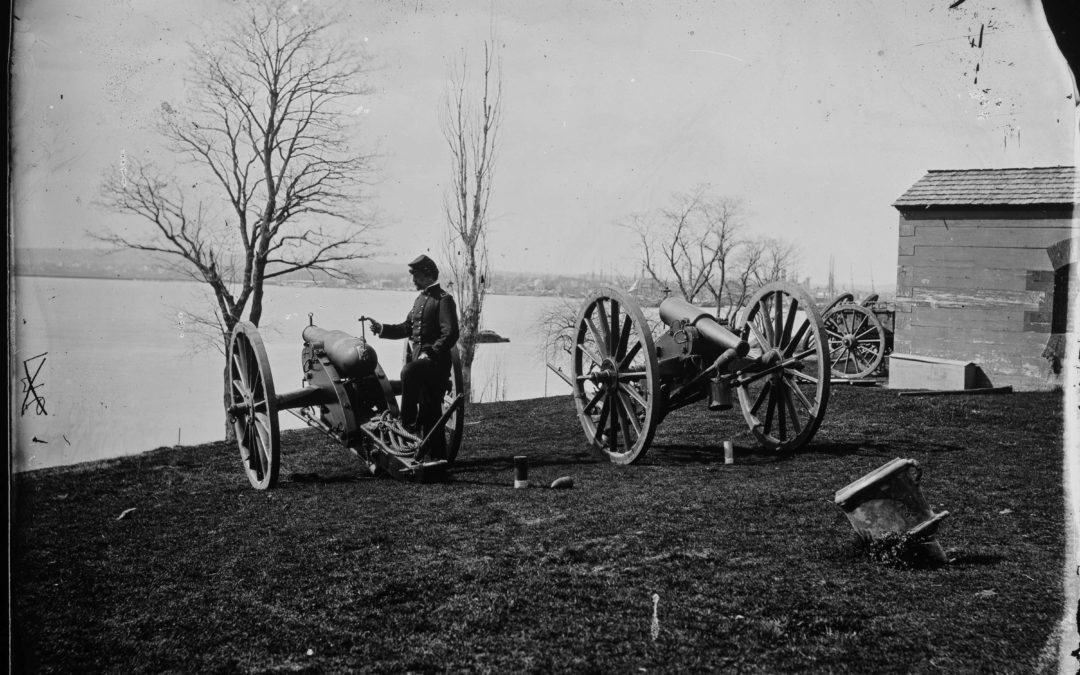This second section of our November series on American military records focuses on the conflicts which occurred during the 19th century in which American service members and volunteers fought. This blog post will provide brief summaries of each conflict, links to history websites, plus details on the available genealogical records and other materials, by conflict. Check the previous Military Records posts for this series in the Introduction and the American Revolution.
As a reminder, November is an excellent month to tag each year on your calendar to revisit military records, as new records are continuously digitized and offered online. Follow SYFT on Facebook, Instagram, Twitter, or LinkedIn, to be alerted when blogs are posted. As you begin researching through the 19th Century military records, I’m happy to talk through what was discovered and offer advice, especially as new clues are discovered about your ancestor(s). You can fill out the Contact SYFT form or email me directly at info@shapingyourfamilytree.com.
19th Century Conflicts:
The War of 1812 (to 1815) – This conflict pitted the young American country against the British, particularly the Royal Navy. The British attempted to restrict trade, forced American men into service for the Royal Navy (impressment or forced recruitment) and tried to squash America’s attempt to expand territory. The British were aided by the Canadians and Native Americans. In August 1814, the group captured and burned the nation’s capital in Washington, D.C. but were repulsed in battles in New York, Baltimore and New Orleans. These fights, though costly to America, created a sense of patriotism and led to partisan agreement. The War of 1812 was regarded as a “second war of independence.”
The Mexican-American War (1846 – 1848) – After Texas gained its independence from Mexico in 1836, U.S. President James Polk felt America should expand west to the Pacific Ocean in what was known as the Manifest Destiny. Fighting emerged along the Rio Grande and Mexico ended up losing about ⅓ of its territory with the U.S. gaining most of what is known as present-day California, Utah, Nevada, Arizona and New Mexico. This conflict was fought both in the U.S. and in Mexico, America’s first involvement on foreign soil.
Indian Wars (19th Century) – The conflicts between Native Americans (Indians) and American colonists began in the 1670s when the latter arrived. In the 19th century, the quest for land fueled many of these battles and massacres, many like the Battle of the Little Bighorn and Wounded Knee.
Civil War (1861 – 1865) – In simple terms, the war began in 1861 after years of tension between people who believed in slavery and those who did not. The nation was split and fought as Union versus Confederate until at the Appomattox Court House on April 9, 1865, the Confederacy surrendered. A million soldiers were injured, 620,000 soldiers were killed and quite a bit of the South was destroyed, which led to a westward migration in the following decades.
Spanish American War (1898) and the Philippine Insurrection (1899 – 1902) – Early in 1895, Cuba began the fight to gain independence from Spain. America’s empathy for Cuba was fueled by “yellow journalism”, (sensationalism through news outlets), and by 1898, the U.S. and Spain declared war against each other. In addition, the U.S.S. Maine, sent to the Cuba coast to protect U.S. citizens, had sunk off the coast of Cuba (circumstances are still unknown). Spain was not prepared to fight and soon experienced several losses, including in Manila Bay in the Philippines and to their fleet in the Cuban coastal area near Santiago. In 1902, the two nations signed the Treaty of Paris, ceding Guam, Puerto Rico, and the Philippines (for $20 million) to the U.S. and allowing independence for Cuba. While the Filipinos helped the U.S. defeat Spain, they were not happy with U.S. occupation and began war against the U.S. in 1899. Several battles ensued including massacres of men and civilians. In 1902, an American civil government took over, however 4,000 Americans, 20,000 Filipino insurgents, and an unknown number of civilians were killed during those three years. Note: Philippines gained independence in 1935.
The links below provide information on the types of military records and where they can be found, like Ancestry ($), FamilySearch (free account), and Fold3 ($, or can be included as part of an Ancestry subscription). Often local libraries hold subscriptions to Ancestry and Fold3, so check with them to determine if that access is available to library patrons before subscribing. NARA also has an excellent resource, the Veterans History Project, which facilitates quick searching based on conflict, and military records plus stories, correspondence, and other materials. Other resources can be found in the local libraries or archives, in records housed near the conflicts (where applicable), or through specific history websites like these The History Channel (HC), Internet Archive (IA), Library of Congress (LOC), Google Books (GB), Britannica (B). Links for these websites are noted below.
| 19th Century Conflicts | Historical context websites | ||||
|---|---|---|---|---|---|
| The War of 1812 | HC | IA | LOC | GB | B |
| The Mexican-American War | HC | IA | LOC | GB | B |
| Native American (Indian) Wars (check 19th Century) | HC | IA | LOC | GB | B |
| Civil War | HC | IA | LOC | GB | B |
| Spanish American War | HC | IA | LOC | GB | B |
| The Philippine Insurrection | HC | IA | LOC | GB | B |
Links to the National Archives records, articles, reports and other materials are listed in the table below.
| Conflict | CMSRs * | Pre-WW1 US Army Pensions ** | Pre-WW1 US Land Bounties |
|---|---|---|---|
| The War of 1812 (1812 – 1815) and includes Discharge Certs, by soldier name, Impressed Seamen, 1793-1814 and other resources and genealogical reports | Yes |
Yes, but much later, starting in 1871, and their widows in 1878. See list of records at link above. |
Yes, were based on acts of 1811 and 1812. Surviving veterans also under acts of 1842, 1850, 1852, and 1855. See list of records at link above. |
| The Mexican-American War (1846 – 1848), includes links to service records, pension records, killed and wounded in action and other resources | Yes | Yes, in 1887, at least 62 years old, served at least 60 days or in battle, & was honorably discharged. See list of records at link above. | Yes, under an act of 1847. See list of records at link above. |
| Indian Wars between 1790 up to Civil War | Yes | March 3, 1927, pensions approved for service in all Indian wars fought between 1817 and 1898. See list of records at link above. | Yes, bounty land acts of 1850, 1852, and 1855. See list of records at link above. |
| The Civil War (1861 – 1865) – A basic primer helps researchers stay focused. Teaching materials can assist in historical context. There are many different record sets for the Civil War, grouped in these categories: African Americans, Compiled Service Records, Confederate Records, Draft Records, Exhibits, Finding Aids, Maps, Navy Records, Pension Records, Pictures, Southern Claims Commission Records, Tax Records, Teaching Resources, Union Records, and Veterans’ Homes. | |||
| The Spanish American War (1898) and the Philippine Insurrection (1899 – 1902) are grouped together. Several of the links provide articles and reports, but also to records for medals, pensions and land bounty applications. | |||
* CMSRs (Compiled Military Service Records) – Beginning in the 1890s, a process began to record and transcribe a multitude of materials for all conflicts, which now represent materials from the American Revolution to the Vietnam War, including details for state Volunteers. These CMSRs should be reviewed prior to other records, as the entirety of a soldier’s records may be contained within these envelopes or jackets.
** Remarried widows could file pensions for their last and previous husbands. In these cases the pension application information could be found under the surname of the most recent husband.
Submitting Military Records Requests:
Many military records can be ordered online, while others which are not online can be ordered using this form (SF-180). Within each of the main categories for online ordering, additional options are shown when the Use For -> link is clicked. For instance, the passenger records’ link includes 8 different types of records, like Visa records, Passports and Alien (A-Files). Requests may take time to be reviewed as a backlog of requests are still being worked due to their offices being closed during the recent COVID pandemic; a recent question reveals the backlog.
Images. Photograph. Artillery soldier with cannon; ca. 1860 – ca. 1865; Mathew Brady Photographs of Civil War-Era Personalities and Scenes, 1921 – 1940; Records of the Office of the Chief Signal Officer, Record Group 111. [Online Version, https://www.docsteach.org/documents/document/artillery-soldier-with-cannon : accessed November 21, 2022].

